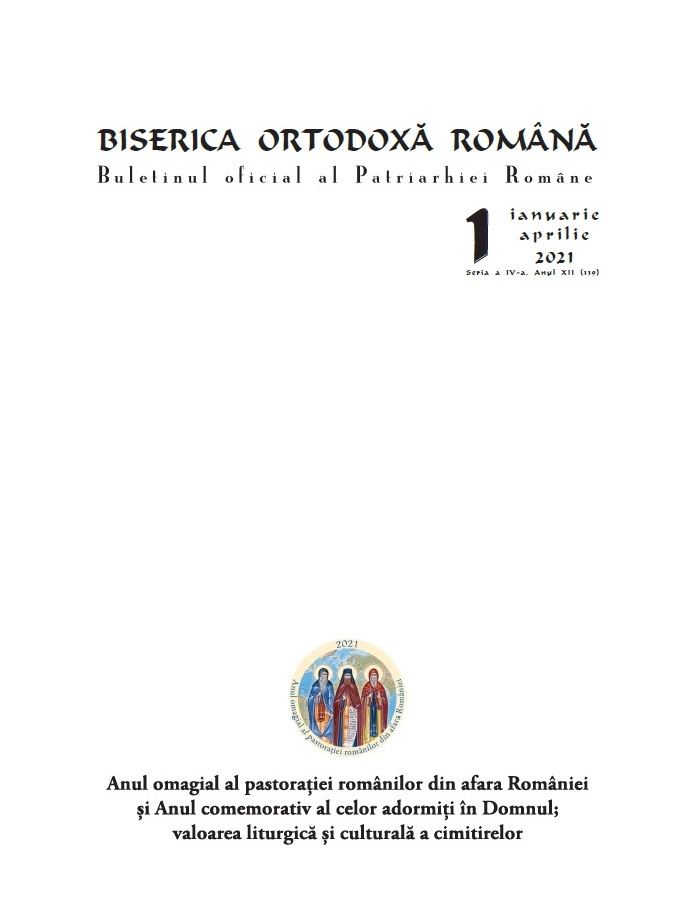Epitaful, reper tanatologic
The epitaph: a thanatological element
Author(s): Adrian ZahariaSubject(s): Christian Theology and Religion, History, Anthropology, Social Sciences, Language and Literature Studies, Archaeology, Studies of Literature, Ancient World, Theology and Religion, History of Religion
Published by: Editura Institutului Biblic și de Misiune Ortodoxă
Keywords: epitaph; grave; death; funerary inscriptions; funerary cross;
Summary/Abstract: Since prehistoric times, burial grounds (of persons either cremated or buried, in either individual or collective graves) have been visibly marked. Thus, levelground was marked with wooden or stone distinctive signs, or at times with tumuli.For hundreds, or even thousands of years, the epitaphs held an important part in the ritual of death. Before the emergence of written language or the adequate tools for sculpture and carvings, graves were rudimentary marked. Later, people developed the ability of employing symbolic language, and used a sharp stone to carve the initials of the deceased person into the gravestones.For thousands of years, epitaphs were written in order to record biographical data of the deceased person, or historical events, in order to express pain, to assert faith, or to document heroic deeds and achievements, to demonstrate the love of family or friends or, at times, to deliver one last jest, from beyond the grave.In Dacia, tombs and funerary monuments were carefully tended to, as demonstrate the epitaphs that have been identified. This concern is accounted for by our ancestors’s attitude towards death, regarded as a threshold to be crossed by the souls of the deceased, which do not perish, but endure. Special attention was attached to the sacrifices performed on feast days dedicated to the deceased–sacrifices offered either by family members/ relatives, or by heirs.The inscriptions on slabs, as well as funerary or memorial crosses, written in Slavonic, Romanian or Greek, in prose or verse, contain information of great historical interest, biographical or genealogical data, offer insights into the evolution of our language and the education of their authors. Not coincidentally, they have been investigated by historians, philologists, theologians and art historians, and contributions have been numerous and varied. Epitaphs in the Romania of the totalitarian regime and the first years after theRevolution of 1989, reflected the structural changes in our society. The communist totalitarian regime attempted to uniformize all material aspects related to death, to devoid it of spirituality. The atheist discourse on death entailed the imposition of architecture standards and censorship of the dimensions and quality of funerary monuments. It was also atempted to minimize or even suppress Christian elements,such as the crosses planted on graves – a defining element to Orthodox Romanians’burial places.The presence of an epitaph – the inscription on a gravestone or a memorial fora deceased person, has various reasons and is expressed in multiple forms. Currently, funeral companies specializing in funerary monuments propose to the families of the deceased „templates” or models for epitaphs to be inscribed on the gravestone. Although the historical and cultural role of epitaphs is less important today, they remain an expression of the human soul, of the beliefs regarding the afterlife, and a way for today’s Christians to leave behind, after their death, a light for their fellow people by means of the words accompanying their graves.
Journal: Revista Biserica Ortodoxă Română, Buletinul oficial al Patriarhiei Române
- Issue Year: 2021
- Issue No: 1
- Page Range: 251-267
- Page Count: 17
- Language: Romanian

